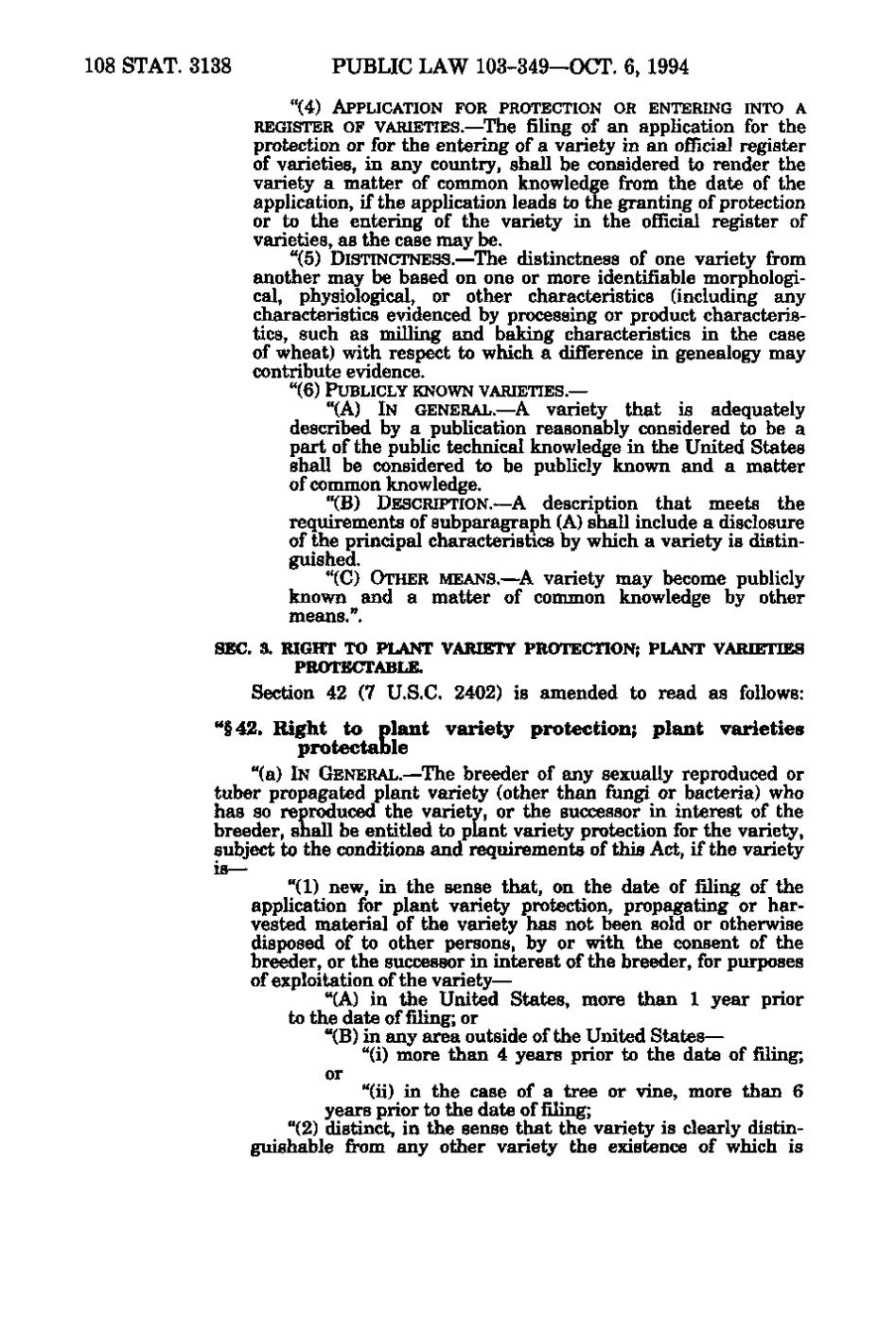108 STAT. 3138 PUBLIC LAW 103-349—OCT. 6, 1994 " (4) APPLICATION FOR PROTECTION OR ENTERING INTO A REGISTER OF VARIETIES.— The filing of an application for the protection or for the entering of a variety in an official register of varieties, in any country, shall be considered to render the variety a matter of common knowledge from the date of the application, if the application leads to the granting of protection or to the entering of the variety in the official register of varieties, as the case may be. "(5) DISTINCTNESS. — The distinctness of one variety from another may be based on one or more identifiable morphological, physiological, or other characteristics (including any characteristics evidenced by processing or product characteristics, such as milling and baking characteristics in the case of wheat) with respect to which a difference in genealogy may contribute evidence. " (6) PUBLICLY KNOWN VARIETIES.— "(A) IN GENERAL.— ^A variety that is adequately described by a publication reasonably considered to be a part of the public technical knowledge in the United States shall be considered to be publicly known and a matter of common knowledge. "(B) DESCRIPTION.— A description that meets the requirements of subparagraph (A) shall include a disclosure of the principal characteristics by which a variety is distinguished. "(C) OTHER MEANS.—^A variety may become publicly known and a matter of common knowledge by other means.". SEC. 3. RIGHT TO PLANT VARIETY PROTECTION; PLANT VARIETIES PROTECTABLE. Section 42 (7 U.S.C. 2402) is amended to read as follows:
- '§42. Right to plant variety protection; plant varieties
protectable "(a) IN GENERAL. — The breeder of any sexually reproduced or tuber propagated plant variety (other than fungi or bacteria) who has so reproduced the variety, or the successor in interest of the breeder, shall be entitled to plant variety protection for the variety, subject to the conditions and requirements of this Act, if the variety is— "(1) new, in the sense that, on the date of filing of the application for plant variety protection, propagating or harvested material of the variety has not been sold or otherwise disposed of to other persons, by or with the consent of the breeder, or the successor in interest of the breeder, for purposes of exploitation of the variety— .J "(A) in the United States, more than 1 year prior to the date of filing; or "(B) in any area outside of the United States— "(i) more than 4 years prior to the date of filing; or "(ii) in the case of a tree or vine, more than 6 years prior to the date of filing; "(2) distinct, in the sense that the variety is clearly distinguishable from any other variety the existence of which is
�
